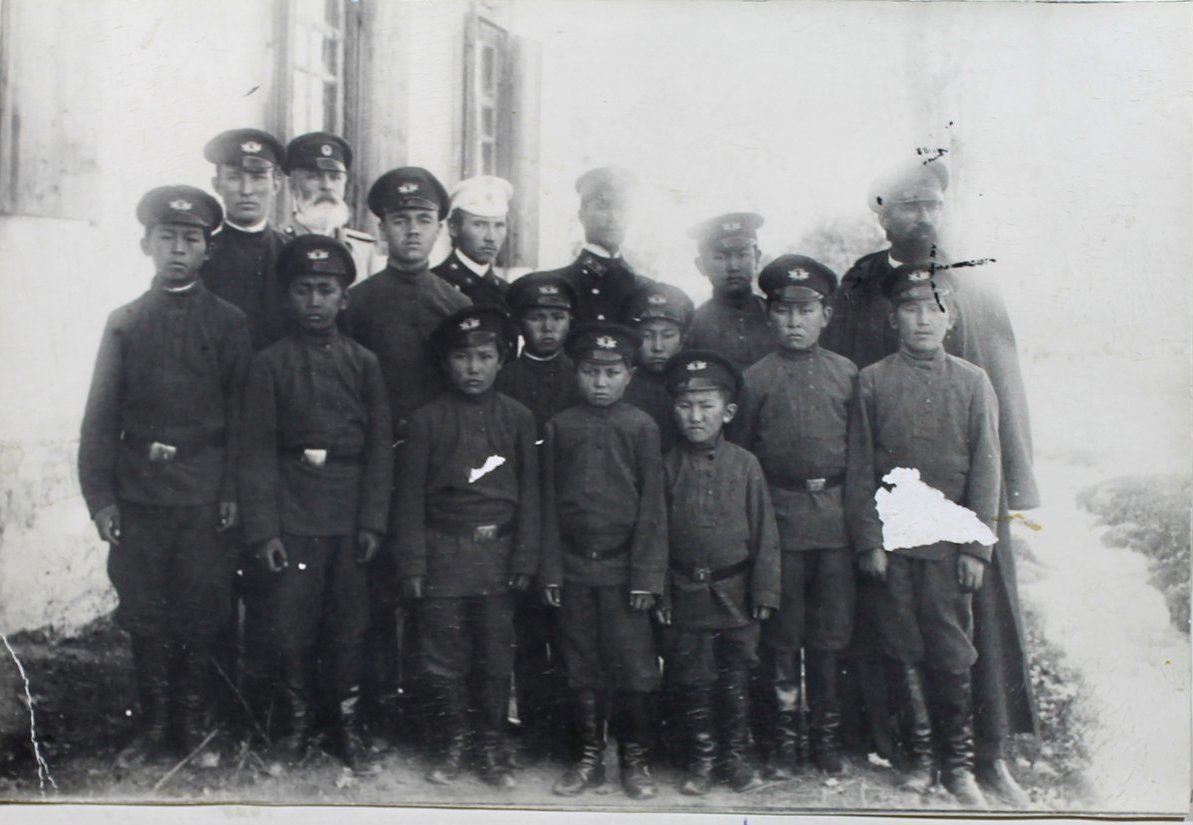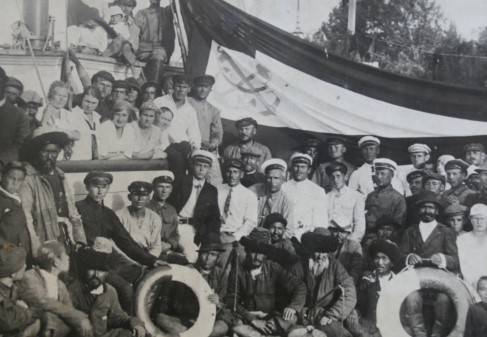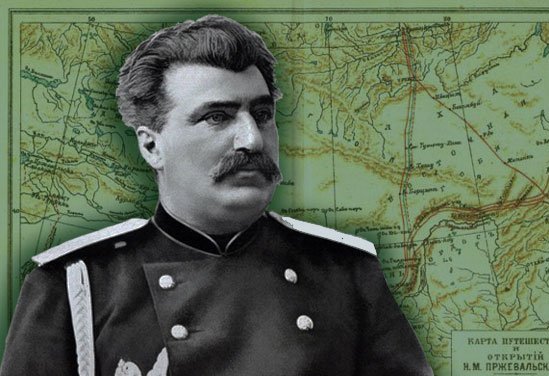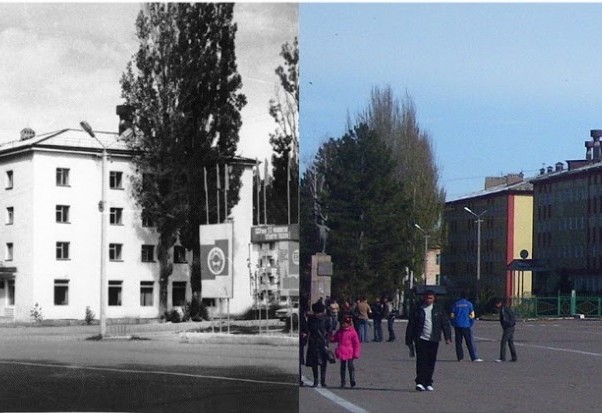- Visit Karakol, Kyrgyzstan, Karakol
- +996 551 451515
- info@visitkarakol.com
Karakol - Architectural Heritage
In the middle of the 19th century, an influx of immigrants from Russia and Ukraine brought some important features to the cultural and historical peculiarities of Turkestan. This immigration wave significantly influenced the further development and formation of the local lifestyle, closely mixing and interweaving the features of life, farming and, most of all, Orthodox Christianity. Numerous immigrant families took their most valued possession with them: a personal icon. With these, orthodox culture arrived in new lands.
Personal icons were available in almost every home, and the migrants' commitment to their religion caused respect and natural interest among the local population. Settled representatives of the Orthodox clergy started advocating the creation of local prayer houses and churches, and according to Russian custom, donations were sent towards the building of local churches.
The Metropolitan Bishop Vladimir told of a case when a man wearing a large turban and richly embroidered dressing gown entered the house of a peasant who was collecting funds to build a church. Seeing that the peasant was frightened and confused, he reassured him and put gold coins on the table. That was one of the first donations made by the local Turkestan population towards the building of Russian "mosques".
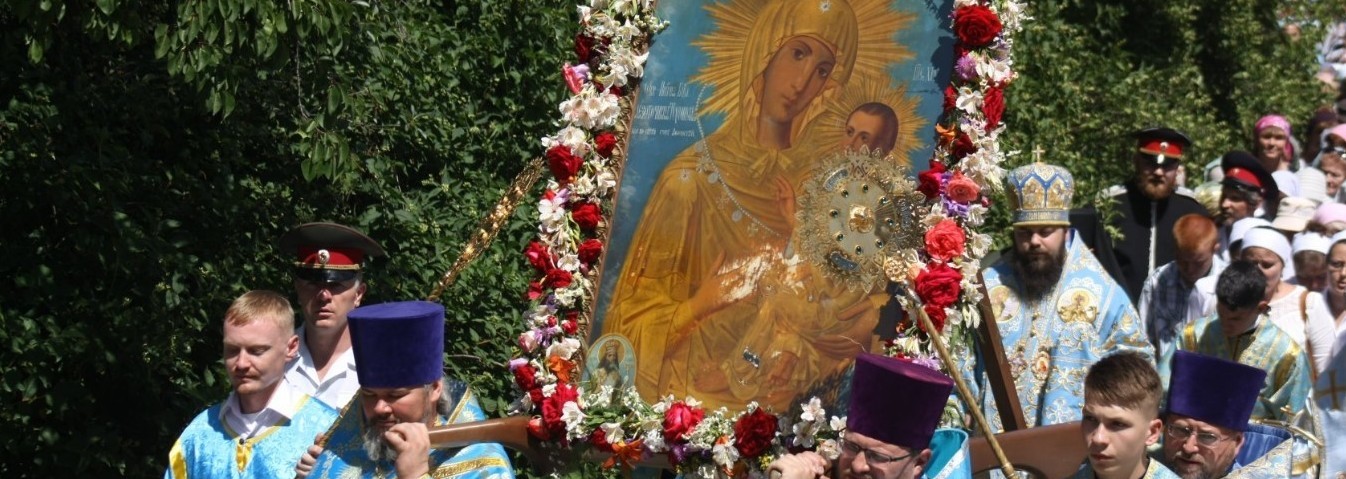
The earthquake of 1889 in Semirechie destroyed many brick churches.
Wooden churches started being built in Kyrgyzstan because they are more earthquake-resistant. With the talent and efforts of the architects Zenkov and W. Heinzelman, a whole series of wooden temples with features adapted to the conditions of the Turkestan region were designed. It should be noted that wooden churches were not erected in Russia, but under the influence of local culture the style was further developed and modified here in Turkestan.
The history of the creation and formation of the cathedral goes back to the time when Karakol was found by a far-sighted and pragmatic traveler Alexander Kaulbars. He initiated the erection of temporary temple of felt, the material that was widely used at that time. Already a year later wooden, and later stone and brick walls, replaced the felted walls. Not being able to resist the fires and the earthquake of 1889, the church was destroyed almost completely.
In 1895 local merchants of the Maslikov family funded the erection and consecration of a new church. In accordance with their original idea, it had the form of a cross and five domes, with a wooden bell tower crowning the small and compact temple structure. The snow-white walls with carved blue insets and frescoes depicting flowers and bunches of berries created a sense of pristine purity. The many-faced iconostasis and modest decoration of the church truly made it a house of God. The temple was an important educational center; its library had more than 1000 books.
However, the revived church was destined to live a brief and secular life. At the time of the widespread destruction of Orthodox churches (when was that? Please mention a time frame for the people who haven't read much about Russian or Soviet history), the cathedral was first simply closed, and later completely plundered. Icons, altar books and works of art, representing important historical and artistic value, disappeared without a trace. The church served as a military party club. Only in 1944, after the adoption of the state provision "On the procedure for the opening of churches" the first restoration work began. These operations did not, however, last long. Just one of the five domes, the one with the cross, was restored. The cathedral existed in this form until 1961.
After the next changes in the party's policy towards religion, the church building was misused again for a long 30 years. Parishioners were allocated dirty and uninhabited warehouses of a non-working grain factory far beyond the outskirts of the town. The church territory was given to a children's sports school and a sports hall was built inside the cathedral. In 1989 the decision was made to create a local history museum in the church building. The plan was to collect all the legends and tales about the native town, its founders and heroes and to exhibit antique objects. However, due to the newly changed political situation, these plans did not come true.
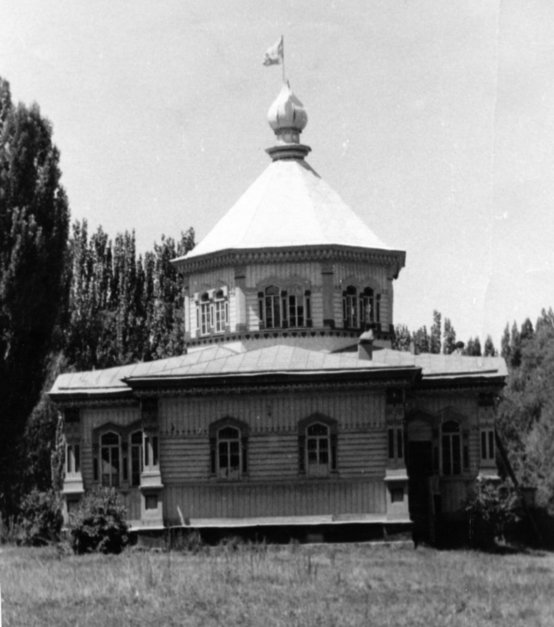
In 1992, after much controversy, church ministers and parishioners were able to regain the dilapidated and half-decayed building of the cathedral and the neglected and plundered territory. It took three years to restore the temple and recreate its appearance. The revival of the church was the merit of ordinary inhabitants of the town, whose efforts and voluntary donations were crowned with success. The cathedral became the property of the church only in 1995.
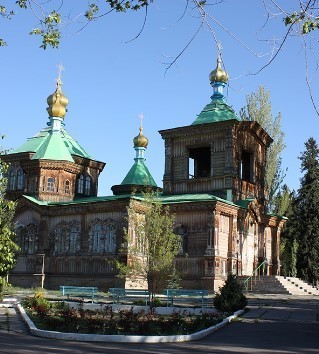
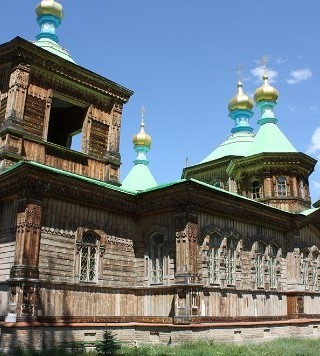
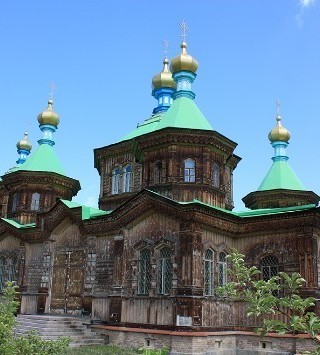
The modern appearance of the church has not changed much. Traditional for the temple are five gilded domes crowned with crosses, a long inner staircase that leads to a towering bell tower and the filigree chimes of many large bells and small bells. The log walls of the church and the main granite porch give the church a majestic and primordially Orthodox appearance. The steadfast temple with its brief, hundred-year history, full of hardships and mourning events
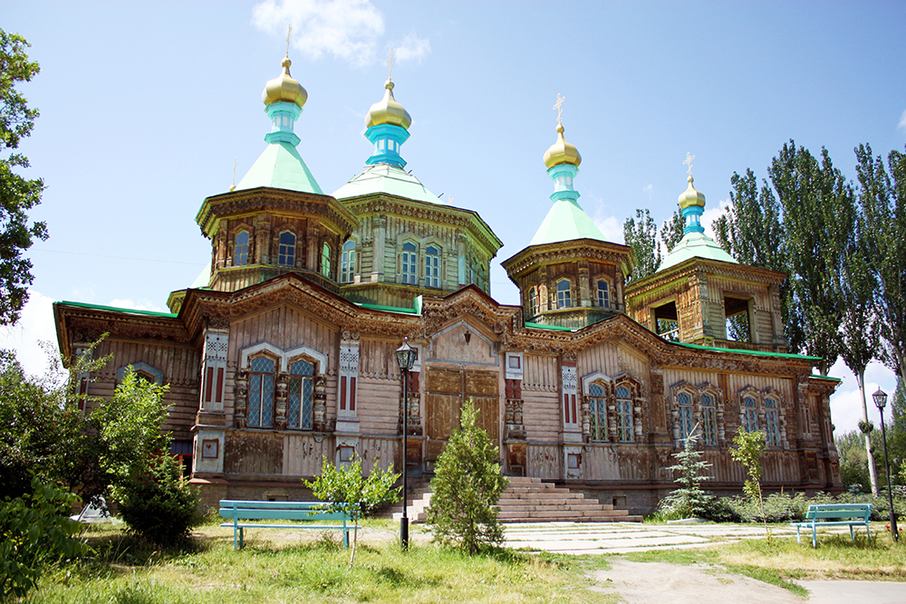
Another unique architectural monument and
landmark of Karakol is the Dungan mosque.
The building of the mosque in Karakol is closely related with the arrival of Dungans in the Turkestan region at the end of the 19th century. The group of Dungans that settled in this city came from China early November 1877 after their uprising in their homeland was suppressed. Yusup-hazrat, or Ae Lozhinja, the "venerable old man" (Dungan translation) headed that group.
In the spring of 1878, allotments were allocated to the settlers 6-7 kilometers away from the town. The Dungans founded Irdyk village, which official name isMariinsky. The rest of the refugees joined the propertyless workers. As a rule, after the settlers built their houses, they started building a mosque,- the spiritual center of the community.
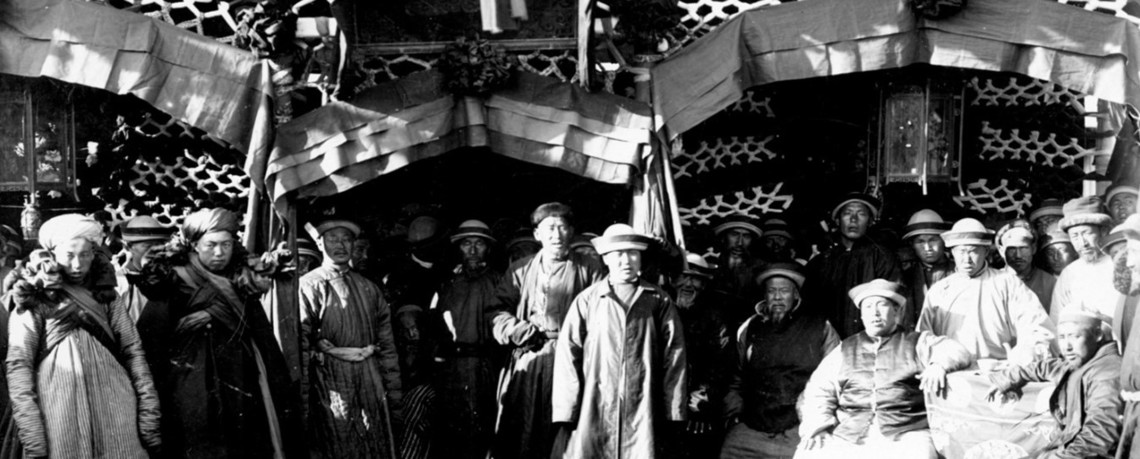
The mosque reminds of ancient Buddhist temples. It is painted red (the color of demons and dragons), yellow (which brings wealth and luck) and green (which symbolizes happiness). All these colors form the basis of the Dungan cultural concept.
The peculiarity of this mosque is the way it was constructed: builders did not use any single nail or dowel of metal. Only wooden poplar and karagach beams from the Tien Shan valleys were used. The polish of the mosque was made with nuts. All the building materials needed to be carefully prepared beforehand.
Local builders dug the foundation and did the rough work involving stones, while the rest was taken over by the invited guests. Zhou-Sy or invented ornaments and painted them on wooden planks. Thus his assistants cut out his creations. The project was divided into several stages, every minor detail was thought through. The building was assembled in parts. It took up to three years to construct some of the parts. The object was finished on May 10th 1910.
The size of the mosque is impressive, especially compared to similar constructions in Central Asia. The mosque is a rectangular shape of 27 by 15 meters. A row of columns support the western and eastern sides of the roof. The western wall is directed towards Mecca and windowless. Worshipers pray in that direction. There are four bearing pillars supported by stone pedestals. From the architectural point of view, the building is quite uncomplicated, even though it seems it is impossible to replicate. The mosque can be disassembled in a day, the beams are not attached, and they are simply put into the special axes of the felling. There are 3 roofs with carved edged gables along the sides. mythical dragons and other animals that play an important role in Chinese culture are carved on the beams. Thirty golden columns hold the roof. The base is blue (result of a renovation in the Soviet era). Images of fruits decorate the cornice.
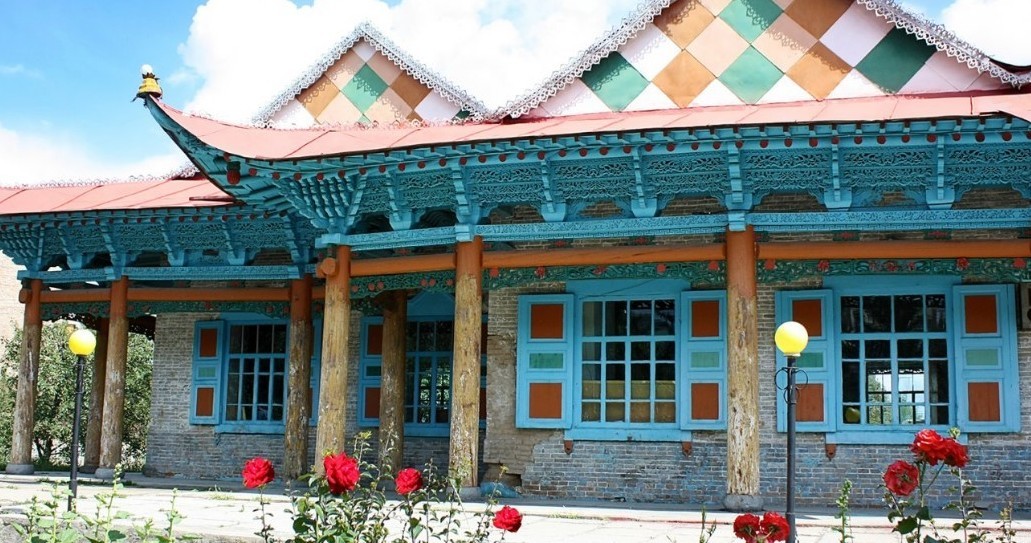
During the Soviet period, the main building of the mosque was not subjected to major restructuring, thus it retained its beauty. Unfortunately, In the 1930s a minaret that stood apart from the mosque was lost. The current minaret was built in the 1940s.
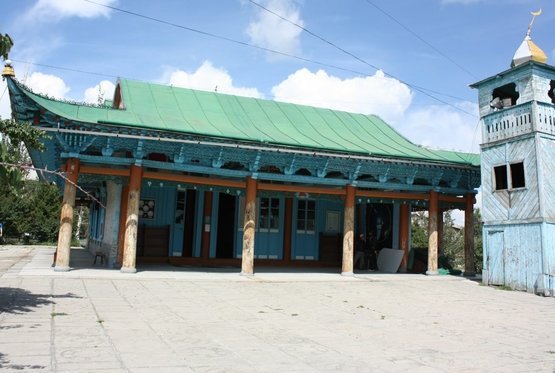
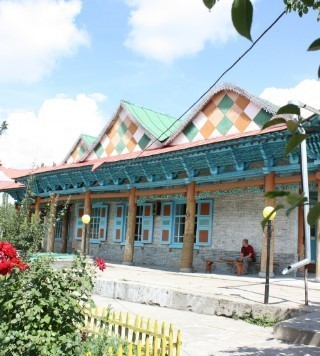
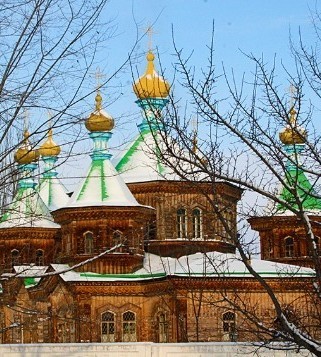
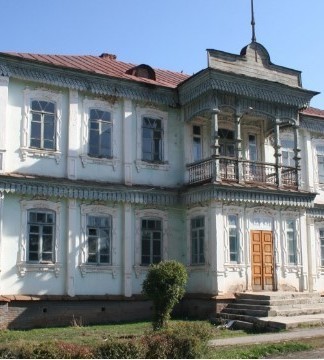
The project "Preserving the cultural heritage of Karakol" was initiated by the YVO (youth volunteering organization) "Leadership" in cooperation with the Issyk-Kul Oblast State Archive and the media partner "Issyk-Kul Wave" radio station, with the support of Internews. Project Objectives:
- to contribute to the preservation of the architectural heritage of Karakol;
- to develop an interactive online map showing the historical sites of the city;
- to conduct a thematic media campaign to attract the attention of local residents and to develop civic engagement.
Information about the project: http://www.leadership.kg/index.php/ru/save-karakol...
The team of YVO "Leadership" The YVO (youth volunteer organization) "Leadership" team took part in the Laboratory of Media and Social Innovations in Dushanbe (Tajikistan) from May 21 to 23, 2017, organized by the Internews Network in Central Asia. Lab is a social project for solving socially significant problems and addressing the needs of inhabitants of Tajikistan, Kyrgyzstan and Kazakhstan. Such events are a good tool to stimulate the participation of youth, civil society and the IT community in the implementation of socially significant media initiatives. Our team presented the project "Creating an Internet platform about the historical heritage of Karakol". Following the results of the Laboratory, a team of experts and mentors supported one idea from each participating country. Our idea became the winner from Kyrgyzstan, and thereby we won a grant to implement the idea. We express our gratitude to all the mentors and organizers of the Laboratory - 2017 #inLab2017Link to our presentation of the project during the Laboratory:https://m.facebook.com/story.php…
